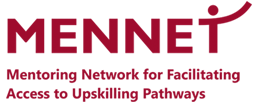Information
Learning outcomes:
- The learners will be able to understand how characters feel and the motivation behind their actions.
- The learners will be able connect the text with their personal experiences
- The learner will be able to give a clear understanding of a picture/sign based on his/her a priori knowledge
- The learner will become more engaged while reading
2.1 Introduction
Good Readers make connections to understand and remember better what they have read. How does this work?
While you are reading, your background knowledge helps you making connections to better understand the text:
…with something similar that happened to you (I remember when…)
…the text is very similar with other text that you have read (The characters/plot is similar with something that I read when I was young)
…with something that reminds you of something you heard (saw, read) in another newspaper, book etc…(This reminds me of people who lived many years ago who sustained themselves through crops and livestock)
The more closely you as a reader, connect to the text, the higher the level of comprehension will be.
Sometimes connecting is simple, because you have experienced something similar. But, at other times, especially when the text is not in an area from where you have background knowledge, comprehension is a little bit difficult. To be a better reader, think about how the story relates to your life, which makes you more engaged in the reading experience.
Making connections is a strategy that can assist in making meaning from a text. Learners can make connections between:
- Text and self
- Text and text
- Text and world
Making connections while reading helps us, to think of what we already know through our background experience, to gain new information of the world and to make predictions.
2.2 How to make connections to better understand text
What does this mean?
Text-to-self connections are highly personal connections that a reader makes between a piece of reading material and the reader’s own experiences or life. An example of a text-to-self connection might be: “This story reminds me of a holiday in France, when we visited the Louvre museum” or “This is similar to what happened in my last job”.
Sometimes when you are reading, you understand the text better by connecting it with other similar texts, other books by the same author, stories from a similar genre, or perhaps on the same topic. These types of connections are text-to-text connections. An example of text-to-text connection might be: “This character has the same problem that I read about in a story last year” or “The topic of this article it reminds me of an article I read one year ago on Internet”.
Text-to-world connections is when you can relate what you are reading to something that happens in the world. These are connections between events in the story and things that you have seen or read about occurring in the real world. It can be something that you saw/heard in TV-programs, movies, magazines, or newspapers and how this connect with what you are reading. An example of a text-to-world connection would be when a reader says: “I saw a program on television that talked about things described in this article.”
Exercise
Read the text below and do the exercise:
TNS Gallup: People want further education online
A recent survey from TNS Gallup reveals that 77 percent of those who want further education, want to do it online.
“This shows a maturity in the population for using digital media,” says Torhild Slåtto, Director of Flexible Education Norway, which is the national organization for private and public providers of online and flexible education.
More than half wants more education
The survey is representative for the entire population in the age span 26 to 60. More than half say yes to more education, and the women are raising the bar with 57 percent vs the men’s 50. The motivation for further education is more or less equal in the different parts of the country.
Young people are more eager for education
72 percentage of the surveyed in the age of 25-29 years further education, while only 37 percent in the age group 45-60 say the same. “The twenty somethings are at an earlier stage of their career and might see this as a way to promotion. Maybe they also see that professional life in 2016 requires high levels of competency, and that they need to refill their education constantly,” says Slåtto. This age group is also somewhat more concerned with being in school or on campus together with their peers, but within the group that said yes to further education, more than six out of ten say this could happen online.
Retirees want further education!
Three out of ten retirees and recipients of benefit want further education, and 70 percent of these people would want to do it online. This should provoke some thoughts at the Senior Citizen Community Centers and providers of education. Publicly employed are a little more motivated for further education than privately employed, while self-employed are less interested. The least motivated for further education are the homemakers.
2.3 Recap to remember
Making connections
Readers make personal connections with the text by using their schema (background knowledge).
There are three main types of connections we make while reading text.
- Text-to-Self refers to connections made between the text and the reader’s personal experience.
- Text-to-Text refers to connections made between a text being read to a text that was previously read.
- Text-to-World refers to connections made between a text being read and something that occurs in the world.
Making connections while reading helps us to think of what we already know through our background experience, to gain new information of the world and to make predictions.


